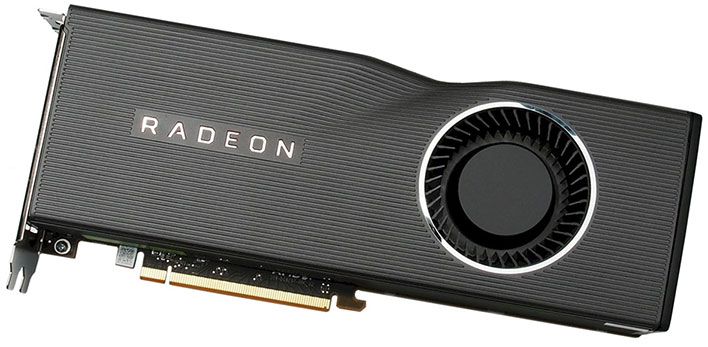AMD Radeon RX 5700 XT Navi Hits Impressive 2.2GHz Overclock With SoftPowerPlay Mod

It will be exciting to see what kind of custom designs and factory overclocks AMD's hardware partners come up with, as it pertains to Navi. Those will start trickling into retail around the middle of August. In the meantime, a video has surfaced of a reference Radeon RX 5700 XT graphics card being modded and overclocked to 2.2GHz.
At stock speeds, the Radeon RX 5700 XT has a 1,605MHz base clock and 1,905MHz boost clock, to go along with a new metric AMD has started using, which is a 1,755MHz game clock. As we explained in our review of Navi, AMD's claim is that the actual GPU clock will likely fall somewhere between the game clock and max boost clock during real-world gaming sessions.
In our own tests, we cranked up the max boost clock only slightly and saw the frequency jump up to over 2GHz in a 3DMark run. That was using the reference cooling shroud. Igor Wallossek from Tom's Hardware Germany, however, took things a step further. Have a look...
Igor made some tweaks to the Windows registry to deploy custom SoftPowerPlay Tables (SPPTs). This mod enables playing around with the power limit of the Radeon RX 5700 XT, which in turn can potentially open the door to higher clockspeeds.
The caveat is cooling. Whenever you start playing around with power limits, voltages, higher clocks, and generally running things out of spec, heat can be a bigger factor. As such, Igor stripped away the stock cooling solution and ran with a custom liquid cooling loop.

Source: Tom's Hardware Germany (Igor'sLAB)
Shown above is one of the benchmark runs comparing the performance of an overclocked Radeon RX 5700 XT with several other cards. You can see that he was able to reach performance parity with NVIDIA's GeForce RTX 2080 Founders Edition.
These are tantalizing results, and Igor breaks down the necessary steps in the link in the Via field below. However, we caution that you should not embark down this road casually—messing with the Windows registry and tweaking power limits can be a recipe for disaster. That said, if you are an experienced user and are comfortable with the risks, then happy overclocking!

